The Historical Archive of the Municipality of Genoa
The Historical Archive of the Municipality of Genoa, based in Palazzo Ducale, preserves the documents relating to the administration of the city between the 15th and mid-20th centuries and holds a collection of manuscripts dating to the 14th–19th centuries.
The archive houses the permanent exhibition titled Amole, libbre, cannelle, dedicated to the historical collection of weights and units of measurement which were used in the city before the final introduction of the metric system in 1805.
Top Ten
The oldest part of the collection is made up of the funds of the Magistracies responsible under the Republic of Genoa for the administration and provision of the city: the Fathers of the Municipality, the Censors, the Abundance and the Provisori del vino.
Furthermore, a collection of manuscripts relating to the history of Genoa (XV-XVIII), the documents of the Capitanato di Voltri (XVI-XVIII), a curious collection of autographs (XVI-XX), the archives of the Municipalities annexed to Genoa in 1926, the archives of the Brignole Sale and De Ferrari families.
DocSAI Center
The Documentation Center for History, Art and Image (DOCSAI) is not widely known, but it is a place where visitors can discover and examine the history of our city and region through thousands of images and books (both modern and precious antique modern volumes).
It is a public place of cultural interest which includes: the Topographic and Cartographic Collection, the Photographic Archive and the Art History Library of the Municipality of Genoa.
It is open to the public by appointment to offer more focused consultations or guided tour. It is located in Palazzo Rosso Annexes. The access to the building is located in Via ai Quattro Canti di san Francesco, where a typically late-medieval entrance and an exceptional wooden coffered ceiling of the mid-fifteenth century, with its original polychrome painting decoration, will receive the visitors who enter the Art History Library, the most important of Liguria.
On the upper floor there are the Topographic and Cartographic Collections: 8.000 images, including prints, watercolors, paintings and projects. In the end, the Photographic Archive includes more than 220.000 images representing the artistic, economic and social life in Genoa from the second half of the nineteenth century to the '60s.
Top Ten
To understand the vastness and heterogeneity of the works preserved at the Documentation Center for History, Art and the Image of Genoa, it is enough to select a few particularly important pieces from those of the Topographical Collection and the DocSAI Photographic Archive .
For example, there are watercolours offering views of the city or designs for an imagined metropolis that was never realized. And, of course, no shortage of scenes from everyday life, rare testimony of how customs in Liguria have changed in the last century as well as many photographs that depict places that have now disappeared or have undergone radical changes.
Notice
THE MUSEUM IS OPEN!
Come and visit us soon
MEI National Museum of Italian Emigration
The MEI - National Museum of Italian Emigration, housed in the Commenda di San Giovanni di Prè, lies onto 3 floors divided into 16 areas where it is possible to retrace many stories of Italian migration, from the Unification of Italy (and even before) to the present. The museum is in close relationship with Mu.MA - Maritime and Migrations Museum and, in particular, with the nearby Galata Maritime Museum, which houses the section on transoceanic voyages "Memoria e Migrazioni" (Memory and Migrations) and the section on immigration, "Italiano anch'io".
Genoa is a city with a strong link to emigration: it was from here that millions of Italians left for the Americas, Africa, Asia and Australia.
The life stories of migrants are told through first-hand sources such as diaries, letters, photographs, newspapers and archival documents.
It is an empathetic and interactive museum, where you can "do experience" . See, hear, learn and get involed in the scenic setting of one of the city's oldest medieval buildings, which originally provided hospitality to pilgrims.
Top Ten
Diocesan Museum
Nestled between the St. Lorenzo Cathedral and Palazzo Ducale, the Diocesan Museum lies in the heart of Genoa: with respect to major thorough fares it is in a side street, via Tommaso Reggio. Entering the Museum you discover an unexpected and surprising building containing precious works of art: a medieval cloister full of frescoes and built on an ancient Roman domus; a wealth of paintings and sculptures, fabrics, illuminated manuscripts, silver, reliquaries, musical instruments and an initial archaeological section, that tell the artistic history of the city.
The building that houses the museum has a complex structure, the result of the numerous developments that have taken place over time: erected as the residence of the Canons of the Cathedral in the second half of the 12th century, in an area which had been used as settlements in Roman times, its many additions have left visible the changes of the following centuries giving us an extremely interesting architectural artefact, in itself a good reason to visit.
A visit to museum follows a chronological sequence over four floors, interspersed with themed rooms, among which, and genuinly unique, is that dedicated to the display of the sixteenth-century The Passion Canvases (depicted on a fabric which is the precursor to jeans).
The collection of the Diocesan Museum is composed primarily of works belonging to churches of the diocese: only a small part has been received through donations or belongs directly to the Museum, which is therefore in charge of their conservation, protection and enhancement.
Top Ten
In the rich museum collection there are works that tell not only the story of how they were created, by whom and for what purpose, that is the data traditionally linked to the understanding of a work of art, but they also allow us see the continuous thread that persists between the distant past and our present.
The Museum includes a unique room that houses The Passion Canvases, on loan from the Ministry for Cultural Heritage and Activities and for Tourism: fourteen large linen cloths dyed with indigo and bearing white lead paintings, they formed an ephemeral apparatus for Week Holy and depict scenes from the Passion of Christ. They are the work of artists from different eras, starting with sixteenth-century masters who were inspired by Dürer's engravings. The material is considered a precursor of the jeans fabric, which, as is well known, was used for the first time in Genoa and owes its name to the city.
Museum of the Lighthouse "La Lanterna"
The museum of the lighthouse of Genoa "La Lanterna" is part of the Mu.MA - Maritime and Migration Museums ,together with the Galata Maritime Museum, Pegli Maritime Museum and the Commenda di Prè, home of the MEI National Museum of the Italian Migration.
The Lanterna of Genoa is the symbol of the city, the highest lighthouse in the Mediterranean, second in Europe.
It has been a tower of signaling and armed guard over the centuries, a stage for tightrope walkers, prison. It was built in its present form in 1543, after the destruction of the old lighthouse in 1514. The first stone of the Lanterna wall was placed in 1626. This 20-km-long wall was completed in 1639, thus becoming the longest city wall in Europe and second in the world, in length, only to the Chinese Wall.
The rock on which it stands is 40 meters high, the tower 77 meters, its summit is therefore 117 meters above sea level. Its rotating optic projects light up to 57 km away.
There are 172 steps to climb to get to the first terrace (the only one that can be visited).
Top Ten
A visit to the museum of the Lanterna begins with the path that leads to the ancient lighthouse, overlooking the Port of Genoa.
Continue on to the open air museum of the park, which runs adjacent to the seventeenth-century fortifications and the Porta Nuova della Lanterna, the ancient western gateway to Genoa.
At the base of the lighthouse, inside the ancient fortifications is the Museum of the Lanterna, which is currently being updated: in the first rooms, the story of the Lanterna is told; later rooms, known as the "Cannons", house lights and lanterns.
Leaving the museum, continue towards the lighthouse, which visitors have the opportunity to climb its 172 steps to the first panoramic terrace to admire a fascinating and unique 360° view of the city and its port.
Avviso
Il museo di storia naturale è chiuso per attività di manutenzione della struttura e tutela delle collezioni.
Natural History Museum Giacomo Doria
Founded in 1867, the Natural History museum is the oldest museum in the city and has an enormously rich scientific collection made up of 4.5 million artefacts and specimens from all over the world: animals, fossils, plants and minerals. 6,000 items are on display, distributed over 23 rooms on two floors.
The ten rooms on the ground floor house the mammalian exhibition while the two central halls, particularly spectacular, are dedicated to Palaeontology and temporary exhibitions. The first floor continues with six rooms dedicated to other Vertebrates: Birds, Reptiles, Amphibians and Fish.
Two rooms are reserved for insects and other invertebrates. The “Cell” room houses a three-dimensional reconstruction of a cell enlarged 100,000 times. The last section of the museum is dedicated to Minerals.
A visit is a journey into the biodiversity of the planet and is ideal for children, teenagers, families and for all nature lovers.
Top Ten
Visiting the Museum, we immerse ourselves in an extraordinary world that crosses time and tells us the stories and adventures of both animals and men; a world populated by animals from the distant past, by specimens linked to the great explorers of the nineteenth century and by species extinct in historical times at the hand of man as well as creatures featured in novels and films.
Treasure Museum of St. Lorenzo Cathedral
The Museum is housed in medieval underground rooms, specifically the crypt of the St. Lorenzo Cathedral, which were carefully modified by the architect Franco Albini in 1956, to create a unique example of modern museography. The atmospheric space offers a veritable treasure trove of medieval, Renaissance and Baroque gold and silverware.
The objects can be divided into three categories: religious relics and the containers in which they are held, that is reliquaries; secondly, objects and works of art related to the veneration of St. John the Baptist, proclaimed patron of Genoa in 1327; and finally liturgical furnishings made or donated to the cathedral over the centuries and used in the most important religious ceremonies.
Among the most famous pieces there is the so-called Sacro Catino, wrapped in mystery and legend: tradition would have it that it is the Holy Grail, the dish used by Jesus Christ during the Last Supper. It was thought that the green glass was actually precious emerald!
Top Ten
Treasure Museum of St. Lorenzo Cathedral is a modest collection, but boasts a good number of items that are truly exceptional in terms of their rarity and preciousness.
Among the works that deserve special mention there is first of all the Sacred “Catino” (a shallow bowl or plate), once believed to be made of emerald, but is in fact an exceptional example of Middle Eastern glassware; then the Cross of the Zacharias, an ornate crucifix in which a relic of the true Cross is set. Among the works related to the veneration of St. John the Baptist is the so-called Plate of St John the Baptist and the extraordinary processional “ark” used to house his ashes.
Among the liturgical furnishigs, the magnificent processional Ark of Corpus Domini, the large altar frontal called of the Corpus Domini, and the statue of the Immacolata, all works entirely in silver and of remarkable size, a fact which adds to their value.
Sant'Agostino: a Treasure in the Heart of the City
The Museum of Sant'Agostino is entering a new phase, the third, of its life. Inaugurated in 1939 as the Museum of Ligurian Architecture and Sculpture, heavily damaged by the war, and reopened in 1984 in the spaces designed by Franco Albini and Franca Helg, the museum now requires significant works.
These interventions – whose project is presented in the ticket office spaces – include the complete replacement of the large windows, structural and plant adaptation, the creation of new spaces for reception, and a renewed museum arrangement. In this accessible and updated museum, the thousands of works dating from Antiquity to the 19th century, which constitute the heritage of Sant'Agostino and, in a sense, the monumental archive of the city, will be enhanced to the fullest. The planned works will continue in the coming months; however, starting from theYear of Medieval Genoa, the Sant'Agostino complex has reopened, offering, in the spaces of the triangular cloister and the church, a selection of the most significant medieval pieces from the museum. In the largest preserved Gothic church in the city, a panorama of the multifaceted reality of medieval Genoa will be offered, when a peripheral center of Northern Italy became one of the greatest powers in the Mediterranean.
With the opening of the Museum's deposits to the public, thousands of artifacts are made accessible thanks to a monthly program of guided tours. Inside, the remains of city monuments such as fragments of the Church of San Silvestro, those of the Church of Santa Maria in Passione, the Janus of Gian Giacomo and Guglielmo della Porta from the small temple in Piazza Sarzano are preserved. Additionally, a large part of the main altar of Saints James and Philip, the Madonna from the shrine on Paganini's house in Via Madre di Dio, as well as a substantial collection of corbels featuring monstrous figures, evidence of the high-quality private architecture in Genoa between the 16th and 17th centuries, are also housed there.
Top Ten
Although the museum contains a wide variety of objects - sculpture, painting and applied arts artifacts – it was created and designed to house works of sculpture. Natural light, in Franco Albini's brilliant design, brings out of the carved stone ever changing and surprising aspects, not only with the change of the seasons, but even the time of the day. The Museums greatest treasure is a sculpture: what remains of the sepulchral monument of the great fourteenth-century master Giovanni Pisano that the emperor Henry VII commissioned in memory of his young wife Margaret of Brabant who died and was buried in Genoa.
Over the course of its history, more than three decades, the museum's collection has been transformed, enriching itself with other evocative artefacts from churches and monasteries that, sadly, no longer exist, as is the case with the frescoes or altarpieces. However, there is also a painting section with paintings on wood from the Middle Ages to the early Renaissance. Among the works of applied art, the admirable Assunta in ivory, various ceramics, and the precious Pallium of San Lorenzo, a unique piece also due to its dimensions (almost three metres), both its origins and history are known.
Capuchin Cultural Heritage Museum
In the city centre, attached to the church of SS. Annunziata di Portoria where the Mausoleum of Santa Caterina Fieschi Adorno can be found, is the Capuchin Cultural Heritage Museum collects which the rich artistic heritage of the Ligurian monasteries.
Inside there are not only works by the most famous Genoese painters of the sixteenth and seventeenth centuries, among whom Luca Cambiaso, Bernardo Strozzi, Orazio De Ferrari and Domenico Piola stand out, but also precious sacred furnishings and objects of craftsmanship and Capuchin “arte povera” such as frontals, wooden sculptures, nativity scenes as well as silverware of undisputed artistic value.
The visit to the Capuchin museum and to the monumental complex of the church of the Annunziata di Portoria offers the visitor a glimpse of the city's history, telling the story of the Portoria district and its great hospital in Pammatone where Santa Caterina da Genova offered assistance to victims of the plague, but it is here represented through the work and mission of the Capuchin friars, who for about five centuries have been at the service of the population with their religious witness and assistance to the needy.
The museum offers exhibition events with interesting insights consistent with the mission of the museum and the Capuchin friars themselves.
Top Ten
The works in the museum testify to the presence in the region, to the spirituality and the austerity that has always characterized the Franciscan Order and in particular that of the Order of Friars Minor Capuchin.
There are ten works that are particularly significant to the museum's heritage and that the visitor can always find during a visit regardless of any temporary installations. They come from the convents of the Ligurian Capuchins and are not only valuable works of art, such as the Polyptych of San Barnaba or the valuable monochrome painting dedicated to San Felice da Cantalice by Bernardo Strozzi, called the Capuchin because he belonged to the order, but also works of craftsmanship, produced over the centuries by the hands of skilled friars carvers, weavers, sculptors, etc.
A truly unique work is a two-faced sculpture in marble carved on both sides, depicting Saint Anthony of Padua with Jesus on one side and on the other the saint with the Virgin and Child.
Galata Maritime Museum
The Galata Maritime Museum is part of the Mu.MA - Maritime and Migrations Museums together with the “Lanterna” the Monumental Complex of the Lighthouse of Genoa, the Pegli Maritime Museum and the Commenda di Prè (which houses the National Museum of Italian Emigration).
The Galata, a few steps from the Genoa’s Aquarium, was created at the end of the 1990s based on a bold project of historical and environmental redevelopment of the area of the ancient Darsena and the remnants of the Arsenale della Repubblica: an entire area now rendered visible and which adds charm to the whole area.
The visit passes between the “museum” part in the main building and an open air park area where the archaeological-port is located and which now constitutes the waterfront of the museum, it is here that the submarine the “Nazario Sauro" is moored, the only one in Italy that can be visited “at sea”.
In the exhibition rooms, the visitor passes through scenes that create a suggestive context in which to appreciate the precious objects of the collections: paintings, medieval nautical maps, atlases, on-board scientific instruments, models, etc. They come to life, inviting the visitor to embark on a real journey to discover the history and imagery of the sea. Not surprisingly, the museum's slogan is "Get on board!"
Top Ten
The Galata Maritime Museum is the largest and most innovative maritime museum in the Mediterranean.
Four floors of exhibition space tell the history of sailing and the relationship that Genoa has with the sea, from the Middle Ages to the modern day. In addition to masterpieces such as the Veduta di Genova (view of Genoa) by Grassi and the portrait of Columbus, the large rooms of the Genoa arsenal hold reconstructions of the boats that have marked history: a 42 metre long galley, represents the Age of the oar, a brigantine relives the Age of sailing while the reconstruction of the various parts of a steamship illustrate the Age of Steam. All can be visited and the experience enriched through multimedia interaction.
But what's more, the Galata hosts some sections dedicated to specific themes: the exhibition entitled Memory and Migration and “Italiano anch’io”, are multimedia and interactive experiences dedicated to the history of migration. “Navigating in Art” is dedicated to the figurative arts, navigation and ports: this is achieved through the canvases and watercolours of the Clerici Collection, which are on permanent display in the museum, and includes 19th and 20th century works.
The tour of the interior of the museum ends with the permanent exhibition dedicated to the Andrea Doria, “the most beautiful ship in the world”, Genoa’s most famous, and least fortunate, ship.
Finally a visit to Nazario Sauro is a must, a submarine-museum that can be visited in the dock in front of the Galata, where you can literally "immerse yourself" in the fascinating world of submarines.




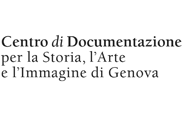



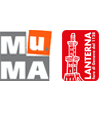
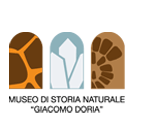
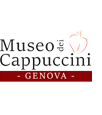
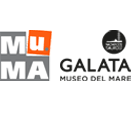





Follow us on Facebook
Follow us on Tripadvisor